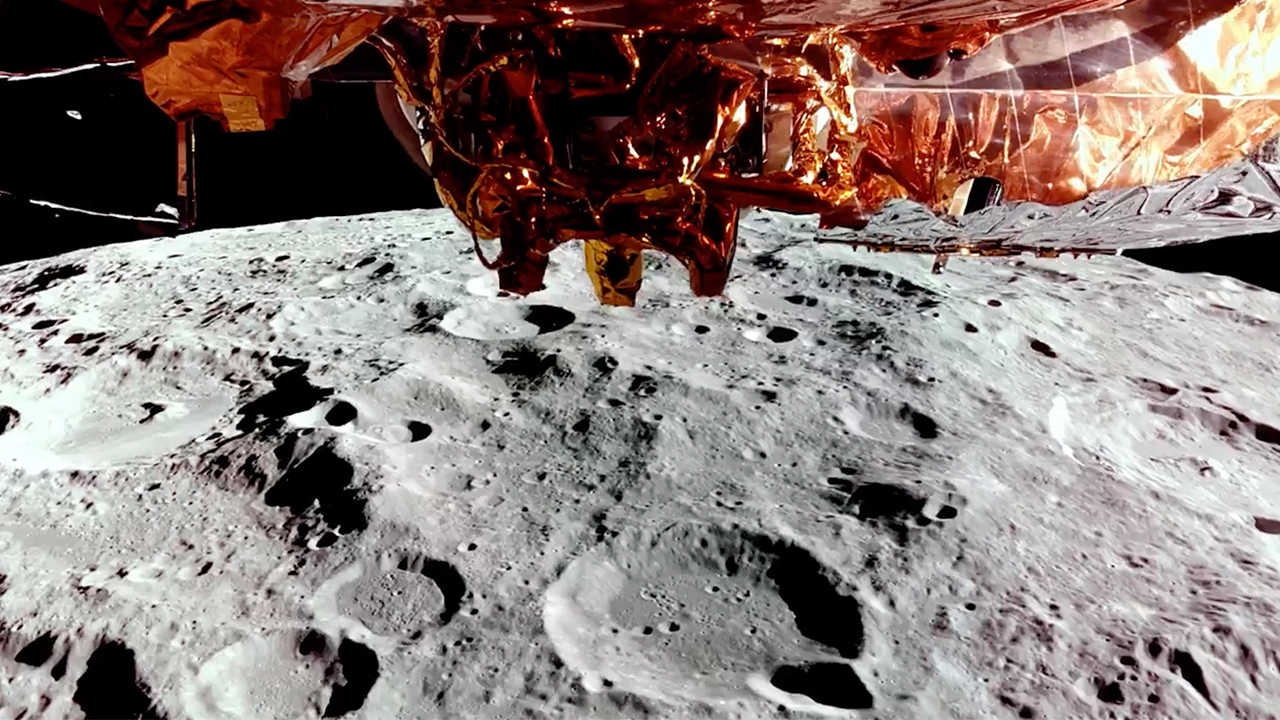Blue Ghost: A New Era in Lunar Exploration
In a groundbreaking achievement, the private lunar lander Blue Ghost successfully touched down on the moon, carrying vital equipment for NASA’s latest mission. This remarkable event not only showcases advancements in commercial space exploration but also marks a significant collaboration between private and public sectors in the quest for lunar knowledge. As we delve into the implications of this historic touchdown, it becomes clear that the partnership between NASA and private enterprises is reshaping our approach to space exploration.
The Journey of Blue Ghost
The Blue Ghost lunar lander, developed by the innovative company Intuitive Machines, embarked on its mission with a clear goal: to deliver essential payloads to the lunar surface. Launched aboard a SpaceX Falcon 9 rocket, the lander represents a significant leap forward in the realm of commercial spaceflight. The journey to the moon was meticulously planned, demonstrating the capabilities of modern engineering and the growing role of private companies in space missions.
Upon its arrival, Blue Ghost executed a series of complex maneuvers that culminated in a safe landing. This success is not merely a technical achievement; it symbolizes the potential of collaborative efforts between public institutions like NASA and private enterprises. The payload on board includes scientific instruments and technology designed to facilitate future lunar exploration and habitation.
Significance of the Payload
The lunar payload carried by Blue Ghost includes several critical instruments that are set to expand our understanding of the moon’s environment. Some key components of the payload are:
- Seismometers: These devices will help scientists understand the moon’s internal structure and seismic activity.
- Regolith Analysis Tools: Instruments designed to analyze the lunar soil will provide insights into its composition, which is crucial for future habitation efforts.
- Communication Relays: Enhancing communication capabilities will support not only this mission but future missions as well.
Each of these components plays a vital role in NASA’s long-term vision for lunar exploration and eventual human settlement. The data collected will inform strategies for sustainable exploration, resource utilization, and even establishing a lunar base.
Commercial Space Exploration: A Growing Trend
The successful landing of Blue Ghost is indicative of a broader trend in commercial space exploration. Over the past decade, private companies have increasingly taken on roles traditionally held by government agencies. Notable players in this field, such as SpaceX, Blue Origin, and now Intuitive Machines, are pushing the boundaries of what is possible.
Commercial partnerships bring several advantages:
- Cost Efficiency: Private companies often operate with lower overhead costs, allowing missions to be executed more economically.
- Innovation: The competitive environment fosters rapid technological advancements.
- Flexibility: Private firms can often adapt and respond to challenges more swiftly than larger bureaucratic organizations.
This shift towards collaboration has enabled missions that would have been prohibitively expensive or logistically challenging if reliant solely on government resources. As we look to the future, this trend is expected to continue, with more private entities joining the space race.
The Collaboration Between NASA and Private Enterprises
The partnership between NASA and private companies like Intuitive Machines illustrates a new model of space exploration. NASA has recognized the value of leveraging private-sector innovation and expertise to achieve its objectives. In return, private companies gain invaluable experience and credibility by working alongside a renowned agency.
Through initiatives like the Commercial Lunar Payload Services (CLPS) program, NASA is actively engaging with commercial partners to deliver science and technology to the moon. The successful touchdown of Blue Ghost is a direct result of this visionary approach, showcasing how collaborative missions can yield significant scientific returns.
Looking Ahead: The Future of Lunar Exploration
As we celebrate the successful landing of Blue Ghost, it’s essential to consider the future implications of this achievement. The data and technology brought back from the lunar surface will be pivotal as humanity prepares for more ambitious projects, including:
- Artemis Program: NASA’s initiative aims to return humans to the moon by the mid-2020s, establishing a sustainable presence.
- Lunar Gateway: A planned space station orbiting the moon that will facilitate deep space exploration.
- Resource Utilization: Future missions will focus on using lunar resources, such as water ice, to support human life and fuel for deeper space missions.
The collaboration between NASA and commercial entities like Intuitive Machines will be critical in achieving these ambitious goals. The success of Blue Ghost paves the way for more landings, more discoveries, and ultimately, more profound human endeavors beyond our planet.
Conclusion
The historic touchdown of the Blue Ghost lunar lander marks a significant milestone in space exploration, illustrating a transition toward a future where commercial enterprises play a crucial role in expanding our reach beyond Earth. This achievement not only showcases the remarkable capabilities of private companies but also emphasizes the importance of collaboration between the public and private sectors.
As we stand on the brink of a new era in lunar exploration, the success of Blue Ghost inspires optimism and excitement about the future of space travel. With each mission, we move closer to understanding the moon and beyond, forging a path toward sustainable exploration and perhaps, one day, permanent human settlement on other celestial bodies.
See more Future Tech Daily

